Man who lost home in bushfire sparked by Defence helicopter south of Canberra angry over delay revelations
The ABC reported that a man who lost his home in a bushfire sparked by a Defence helicopter last summer says it’s “ridiculous” that the aircraft did not relay the location of the fire to authorities for 45 minutes.
Key points:
- An Army chopper accidentally started the fire, but its crew did not tell authorities the location for 45 minutes
- The fire burnt 80 per cent of Namadgi National Park, and destroyed several homes across the border in NSW
- Stephen Littlehales lost his home and says he was outraged to learn authorities did not get a head start in fighting the fire
The fire was sparked by the Army helicopter’s tail light at about 1:30pm on January 27, as it set down in the Orroral Valley in the ACT’s south so its crew could have a break.
The ignition was noticed seconds after landing and the helicopter took off again, with the downdraught from its propellers fanning the flames.
Documents revealed by the ABC yesterday show how Defence did not relay the location of the incident to firefighting authorities until they had landed safely back at Fairbairn air base, at Canberra Airport, at 2:15pm.
By the time authorities had located the fire, it had become an inferno.
Stephen Littlehales, who lost his home in the subsequent fire, said it “hurt” to know the delay may have given the fire time to gain a foothold in the valley.
“I just can’t understand why they wouldn’t radio in,” he said.
“There’s no disputing the fact their actions led to the loss of my house, that’s factual and there’s simply no way around that, and then when you hear this 45 minute gap, it just makes the whole situation worse.
“We lost our entire house, we lost livestock, machinery, everything.
“Forty-five minutes is a lifetime when it comes to bushfires.”

Defence has made it clear the top priority for the helicopter crew was safety, given the aircraft had been damaged in the fire.
But Mr Littlehales said that did not add up.
“Obviously, if their helicopter’s falling out of the sky and they’ve got big things happening, that alters the conversation,” he said.
“The aircraft was flyable, they’ve made the decision to fly it to Fairbarn instead of somewhere else, so clearly it wasn’t something that was ‘urgent’ urgent.”

In a statement, issued to the ABC last week, Defence reiterated that safety had been occupying the minds of the crew.
“At the time of the ignition, the Australian Defence Force MRH-90 Callsign ANGEL 21 was damaged and in an emergency situation,” it said.
“The aircrew’s priority was to return the aircrew and aircraft to safety.
“The aircrew passed the location of the fire to [the] ACT Emergency Services Agency immediately after effecting an emergency landing at Canberra Airport.”
‘Small chance’ to stop fire lost
The Orroral Valley bushfire went on to scorch 80 per cent of Namadgi National Park, which takes up a sizeable portion of the ACT’s land mass.
Several homes, including Mr Littlehales’ were destroyed when the blaze crossed the border into New South Wales.
Former emergency services and environment minister Simon Corbell, who served in the ACT Cabinet for a decade, said the fire was “devastating”.

“We understand that the Defence aircrew were facing a very serious emergency, but we also understand that Defence crews know how to manage complex circumstances,” he said.
“It seems difficult to understand why the geographic location of that fire, sparked by the helicopter light, could not be communicated sooner.
“This is devastating for anyone who loves Namadgi National Park, as all Canberrans do.”
Mr Corbell agreed with other experts’ assessments that the early minutes after ignition were the one chance for authorities to try and get ahead of the fire.Want more local news?We offer tailored front pages for local audiences in each state and territory. Find out how to opt in for more ACT news.Read more
“The fact that an Army helicopter, tasked with assisting the ACT in a bushfire emergency was unable to relay the details of where that fire was, caused by an accident with their aircraft, is deeply disturbing,” he said.
“It really means that any small chance ACT authorities had of rapidly attacking and suppressing that fire were lost because of the delay in communicating the exact location of the fire.”
Opposition emergency services spokesman Jeremy Hanson said there were lessons to be learned from the incident, including the speed at which information was communicated and the use of landing lights.
But he also defended the crew, who were trying to operate safely in challenging conditions.
“We need to be very careful that as we learn the lessons from this incident, that people aren’t just pointing the finger and the blame at the crew, who in the circumstances have done very well to get everybody home safely,” he said.
In a statement released yesterday, the Emergency Services Agency said it was “satisfied” Defence had followed safety protocols in reporting the fire.
“The community should be reassured that the ACT ESA did all that they could to reduce the spread of the Orroral Valley Fire as quickly as possible [and] our crews worked extremely hard to ensure no lives or homes were lost,” the statement said.
Bushfire outlook: NSW and ACT at risk of fast-moving grassfires
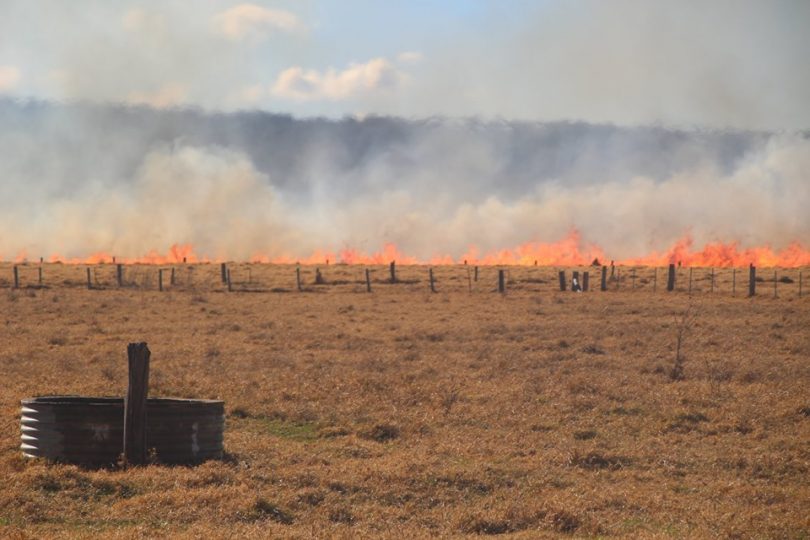
About Regional reported that People living in the Southern and Central Tablelands of NSW and parts of the ACT should be on high alert for grass and crop fires this summer, experts warn.
The Bushfire & Natural Hazards Cooperative Research Centre’s (BNHCRC) latest bushfire outlook predicts above-normal fire conditions for large parts of NSW, particularly west of the Great Dividing Range, as well as grassland areas in the ACT.
Significant rainfall throughout winter and spring in NSW and the ACT has resulted in prolific grass growth. Authorities are therefore concerned about grass and crop fires this summer as they dry out in the warmer weather.
Australian Seasonal Bushfire Outlook: December 2020 to February 2021. Image: Bushfire & Natural Hazards Cooperative Research Centre.
“The grass may be green in the area now, but it won’t take long for it to dry out once the heat of summer starts to appear,” said BNHCRC chief executive officer Dr Richard Thornton.
“Despite the prospect of more rain, a few hot and windy days can make a big difference, particularly in these grassland and cropping areas. When the wind is up and the weather is hot, fires happen across Australia.
“Everyone needs to be prepared: from farmers to holidaymakers and those who live on the urban fringes of towns.”
Many farmers were forced to sell stock during the drought, which means there is more fuel around because there are fewer pastures and crops under grazing.
Meanwhile, forest vegetation and grass in the ACT is currently too damp for authorities to burn.
For the majority of areas, the risk of fires is predicted to be highest from mid-to-late summer and residents are being urged to prepare now.
Dr Thornton said research shows many Australians living in high-risk areas are not ready for a bushfire and don’t have plans in place.
“Grassfires can start quickly, can change direction quickly, can be fanned by strong winds and can be very unpredictable,” he said. “We also know bushfires spread through embers so you don’t have to be on the edge of bushland or grasslands to be at risk.”
The NSW Rural Fire Service is also urging residents to think about their bushfire survival plan and reduce hazards on their property.
“I think after a bit of rain, people become a bit complacent because they think they don’t need to worry and they fall into that trap of thinking they’ll mow the grass, clear the gutter or move objects away from their home at a later date,” said Michael Gapps, NSW RFS operational officer – Southern Tablelands Zone.
“Practice your bushfire survival plan. Discuss it with your family and neighbours so they are aware of what your plan is and can let us know in the event of a fire if you have already left.”
RFS asks for halt to harvesting
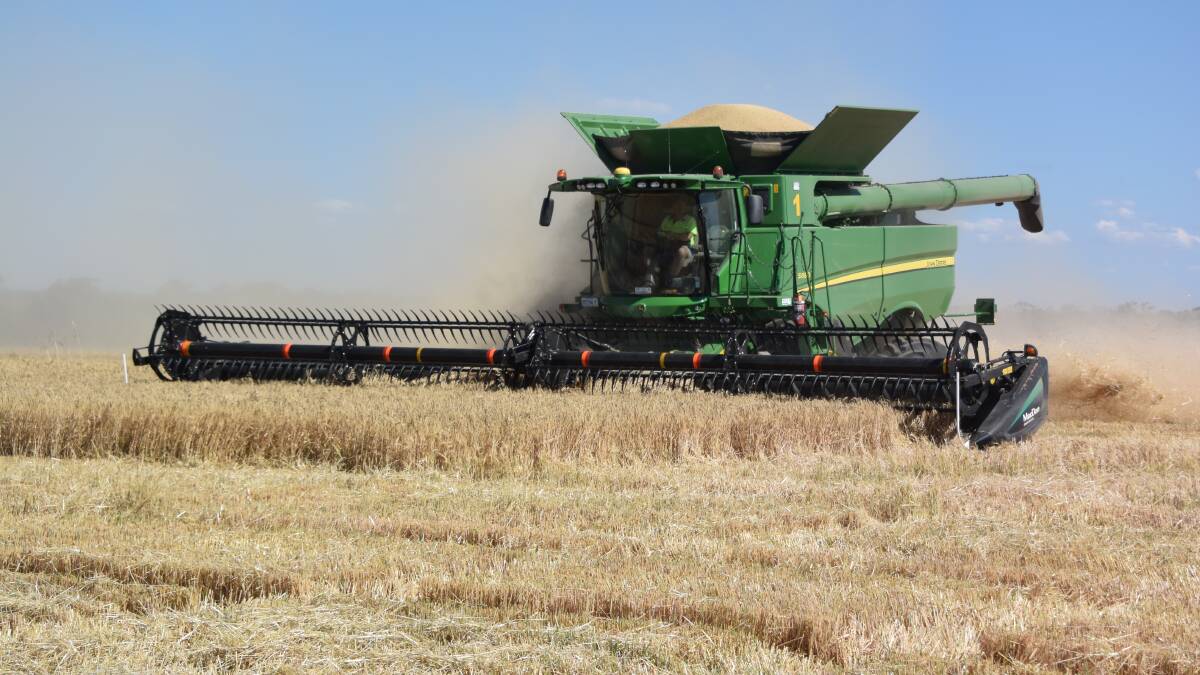
Boorowa News reported that due to the increased risk of fire in the Hilltops LGA, the NSW Rural Fire Service (NSW RFS) is requesting harvest operators immediately stop and check local weather conditions before deciding whether it is safe to continue harvesting.
Those conducting harvesting are advised to do the follow:
Stop: Stop Harvesting Operations in cereal crops and use discretion in canola crops
Check: Check weather conditions, check the grain harvesting guide, and check your equipment.
Decide: Only resume operations if safe to do so and regularly reassess the conditions.
Under the current conditions, fires will start easily and spread rapidly. They have the potential to threaten life and property, as well as destroying millions of dollars’ worth of crop and equipment.
The NSW RFS appreciates the cooperation of farmers on days of heightened fire danger.
Stopping harvesting until weather conditions ease lowers the risk of fires breaking out and can prevent a great deal of damage.
For information on Harvest Safety Alerts and the Grain Harvesting Guide visit: www.rfs.nsw.gov.au/harvesting-guide.
Mental health first aid courses for firefighters

Coast Community News reported that the NSW Rural Fire Service Association (RFSA) has partnered with St John Ambulance NSW to offer mental health first aid courses to hundreds of NSW volunteer firefighters.
To date, 900 courses have been provided, with each course conducted by a certified trainer over a period of 4.5 hours, teaching how to provide initial support to those developing a mental illness or experiencing a mental health crisis.
Secretary of Kariong RFS brigade Christine Tierney completed the course in October and said she had found it invaluable in helping to recognise if people are not in their normal state and might need advice on where to go for help.
“I found the course extremely helpful,” Tierney said.
“It really serves a dual purpose; it helps us recognise possible triggers in ourselves and in others.
“I have relatives suffering with PTSD and have also been in brigades where members have had issues after major fires and it helpful for me to be able to recognise that.
“It also helped me figure out some of my own triggers and that will be useful not just in my volunteer work, but in everyday life.”
Tierney, who is chiefly involved in communications and catering, said she was often involved in helping firefighters debrief when they returned from an incident.
“We are not qualified to give mental health advice, but we are better equipped to start a conversation,” she said.
“We can start with simply asking are you OK and if someone says they’re not we can now suggest where they can go to get professional help – and even drive them there.
“It is absolutely important to have ongoing support for the mental health of volunteers.
“Mental health issues can emerge down the track, even 6-12 months after an incident.”
RFSA President, Brian McDonough, said the mental health courses complemented the holistic support provided to member, including chaplaincy and welfare services.
“For many volunteer firefighters and their families, living with the aftermath of the fires is a day-to day challenge,” McDonough said.
“We know our members are prepared and skilled to deal with a bushfire crisis – now we want to equip them with the skills to help during a mental health crisis.
These courses are not designed to be therapy or support group and absolutely do not replace the important role of mental health professionals.
“Rather they are an educational course to learn how to give initial mental health first aid to others.”
St John Ambulance NSW CEO, Sarah Lance, said the courses will help firefighters recognise and support colleagues, friends, and family who may be suffering with mental health issues.
“Mental health first aid is just as important as physical first aid,” Lance said.
“Throughout the bushfire season more than 500 St John Ambulance worked alongside firefighters in NSW, providing first aid and mental health support at evacuation centres and fire base stations.
“We are proud to continue helping the firefighters who supported Australia through the devastating bushfires.”
NSW woman charged over alleged bushfire recovery grant fraud
Nine News reported that a 27-year-old woman has been charged over alleged fraud relating to more than $20,000 in bushfire support recovery grants.It’s alleged between April and August 2020 the woman, from Warners Bay in Lake Macquarie, fraudulently applied for four Bushfire and COVID-19 Government Grants.The woman received almost $21,000 in grants.In April 2020, police districts within the Northern Region established Strike Force Roche to investigate alleged fraudulent claims for bushfire disaster relief and small business grants through government agencies.
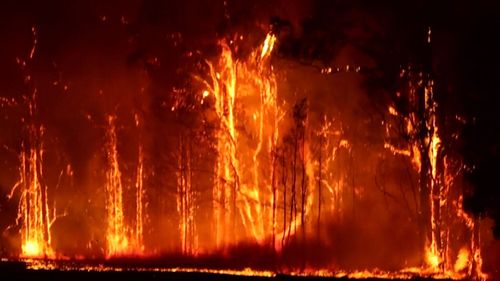
Following extensive inquiries, strike force detectives arrested the woman at Belmont Police Station about 3pm today.She was charged with two counts of dishonestly obtain financial advantage by deception, and two counts of attempt dishonestly obtain financial advantage by deception.She was given conditional bail to appear at Belmont Local Court on in January next year.
Changes to RFS alert icons part of a national warning strategy
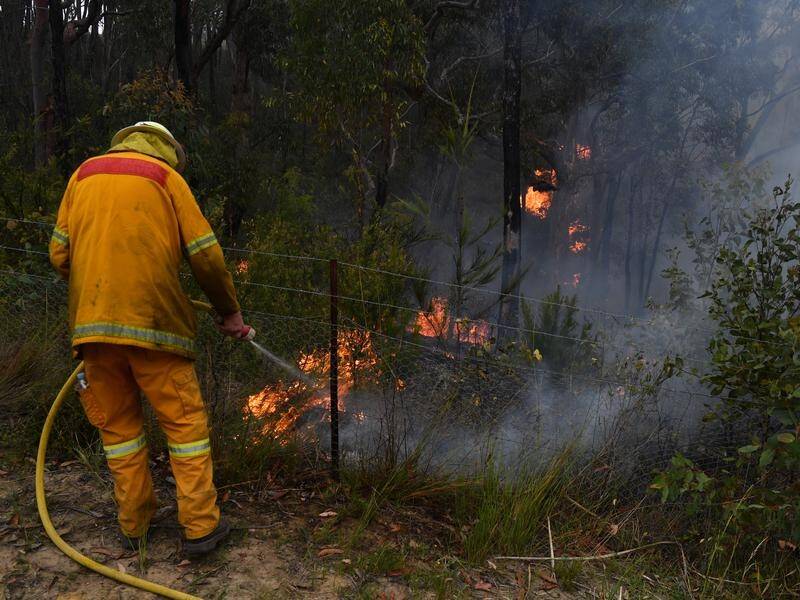
The Lithgow Mercury reported that the NSW Rural Fire Service (RFS) will look to implement an updated alert system on Wednesday, December 2 as hot and windy conditions set in across the region.
The changes are set to coincide with the arrival of summer and the accompanying fire season.
Spokesperson for NSW RFS, Greg Allan, said that the changeover was part of a national overhaul of emergency warning systems.
“The updates are part of a nation-wide approach to emergencies and natural disasters, and are designed to bring all the states and territories under one system and make it easier for everyone to recognise the alert levels,” he said.
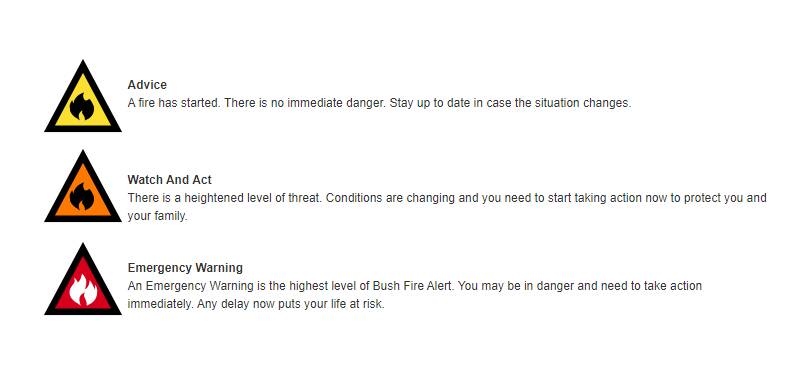
The changes will see existing alert icons change to yellow for “Fire Advice”, orange for “Watch and Act”, and red for “Emergency Warning”.
Mr Allan said that while the colours are changing, the message remain the same.
“For each alert level the new colours will be consistent across NSW and its neighbouring states, along with the Northern Territory.
“What we ask is that all residents familiarise themselves with the new look but remember that the three levels or warning advice will remain the same.
Mr Allan said he also encouraged people to download the NSW RFS app or update their existing version.
“It is a handy tool to have and anyone who already has the app needs to update the app from tomorrow to make sure that it is functioning correctly and you see the new icons.
“We are expecting a busy fire season ahead with a lot of grass growing west of the Great Divide and contributing to high fuel loads, however we are concentrating on prevention and making sure any outbreaks are brought under control and contained swiftly.”
The changes to the alert icons are the first step in an overhaul which will grow to include other disasters such as storms, floods and cyclones under a national banner known as the Australian Warning System.
The system has been designed based on feedback and research from across the country, and will use a nationally consistent set of icons to show warnings on both apps and websites.
Buxton RFS’s Kim Hill named NSW Volunteer of the Year
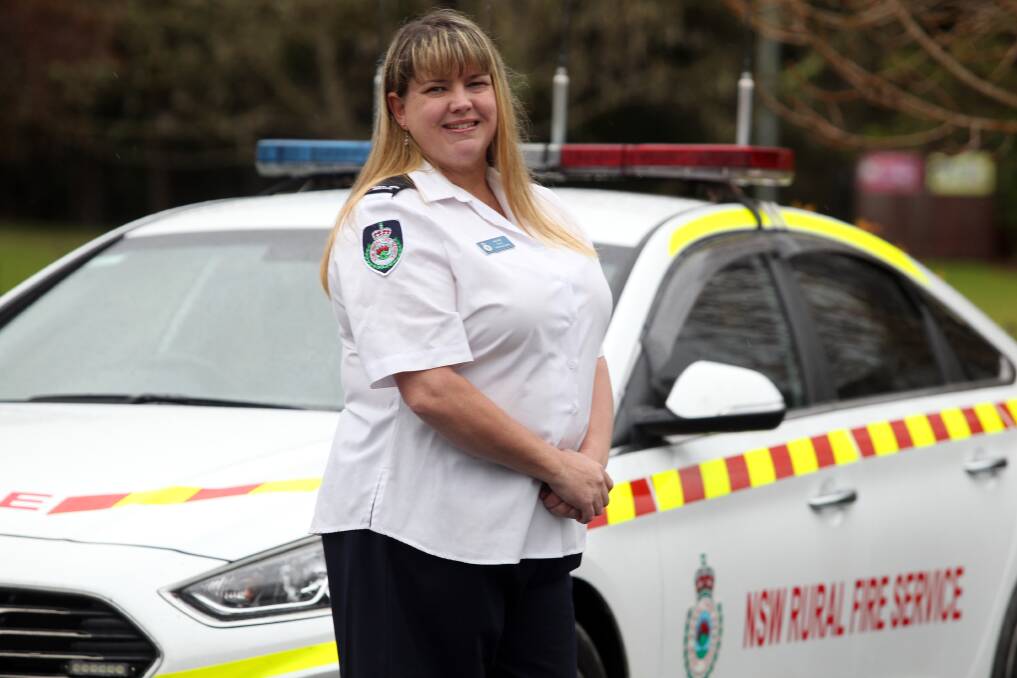
The Camden Advertiser reported that Buxton RFS’s Kim Hill has just been named the 2020 NSW Volunteer of the Year.
Ms Hill was selected from more than 100 other finalists and 120,000 nominees across the state.
Her award comes on the back of tireless efforts coordinating donations during the devastating 2019/20 fire season, including the deadly Green Wattle Creek blaze.
Ms Hill said she was “lost for words” at winning the state title today.
“It’s amazing, there are so many worthy finalists, I’m just blown away,” she said.
“It really hasn’t sunk in yet.
“I’m extremely honoured, especially in this year of all years.
“The amount of help that’s been out there during the fires and Covid, first responders working on everything in both of those events – it’s overwhelming.
“To even be nominated in one of the most difficult years, let alone be a finalist and win is just – wow. I’m lost for words.”
Ms Hill said she’d spoken to her family since the ceremony and everyone was “absolutely wrapped” to hear the news.
A major part of the Buxton resident’s winning efforts was the collection and distribution of donated items.
Ms Hill and Picton CWA’s Kerrie O’Grady helped create the Balmoral Village Recovery Hub, collecting 12 shipping containers worth of food, clothing and other items for the community affected by the fires.
The 43-year-old also spearheaded fundraising efforts for the soon-to-be-opened Telopea Park firetruck memorial playground in Buxton, securing $200,000 for its creation.
The playground honours Horsley Park RFS firefighters Geoffrey Keaton and Andrew O’Dwyer, who lost their lives a year ago when fighting the Green Wattle Creek bushfire in Buxton.
Ms Hill told the Advertiser earlier this year that she wanted the playground to be a place of joy, where Mr Keaton and Mr O’Dwyer’s children and families could come to remember them and have a happy time.
She said the Buxton and Horsley Park brigades had become very close in the past 12 months, and expected that friendship to continue.
“I’m sure an volunteer will tell you, you do it for your community, not for a pat on the back,” Ms Hill said upon receiving her regional award in September.
“If anyone can donate any time whatsover to any cause for volunteering, it’s so rewarding.
“Just being able to put a smile on someone’s face, to help them to move that little bit forward, is more rewarding than anything you can imagine.”
The NSW Volunteer of the Year Awards are an annual program run by The Centre for Volunteering to recognise the outstanding work of volunteers in every region across NSW.
The 2020 NSW Volunteer of the Year Awards are supported by principal partners the NSW Department of Communities and Justice and ClubsNSW.
NSW Minister for Families, Communities and Disability Services Gareth Ward said the award couldn’t have gone to a more deserving person.
“Kim Hill served on the frontline during the bushfires while her own house came under threat and was the glue that held her community together during the incredibly challenging weeks and months that followed,” he said.
“Kim epitomises the selfless community spirit that shone bright throughout last year’s unprecedented bushfire season and is a very deserving recipient of this year’s Volunteer of the Year award.
“There has never been a more fitting time to recognise the enormous sacrifice our volunteers make, and no better opportunity to say thank you for the work they do.”
Centre for Volunteering chief executive Gemma Rygate said the past year had highlighted the incredible, selfless work of volunteers across NSW.
“The past 12 months have thrown up challenge after challenge for communities across the state and volunteers have continued to give their all in the face of this tremendous adversity,” she said.
“These awards are our way of saying thank you and reminding everyone across the state of the value of volunteering.
“Congratulations to our awards winners announced today and thank you to all our finalists, nominees and the volunteering community across NSW.”
Ms Hill has just started a new job with the National Bushfire Recovery Agency as the recovery support officer for Wollondilly.
“I’m so excited by the role,” she said.
“It means that I can be there to help the community, help the council, coordinate things in the reocvery process and look at building us up to prepare for the next time – because there will be a next time. It’s inevitable – we live in Australia.
“It’s my job to help find those gaps and holes in our processes now so we can eliminate them before the next big fire.”
The Telopea Park memorial firetruck playground will be officially opened on Saturday, December 5.
Fire Permits suspended for Mid Coast district
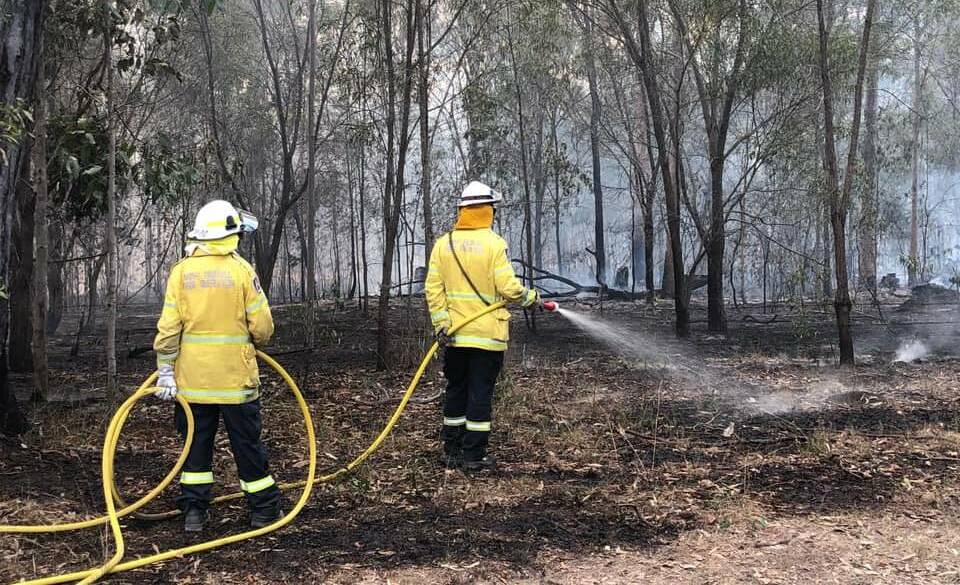
The Wingham Chronicle reported that fire permits have been suspended in the MidCoast Local Government Area. Photo: NSW RFS – Lower North Coast Team
The NSW Rural Fire Service (NSW RFS) is suspending all fire permits issued in the MidCoast and Port Macquarie Hastings and Local Government Areas (LGA’s) as of midnight, Saturday December 5, 2020.
“Whilst we have seen some rain fall across the LGAs in the past month the Keech-Byram Drought Index (KBDI) is currently over 120. The KBDI provides a guide to fire managers of the flammability of organic material on and within the soil surface that can impact their ability to suppress bushfires,” acting district manager Inspector Guy Duckworth said.
“The suspension of permits applies to residents in the Port Macquarie Hastings and Mid Coast LGAs and will be in place until weather conditions result in significant rainfall.
“Keeping the local community and visitors to our area safe from bush fire with the holiday period about to start is our priority.
North Wagga grass fire: firefighting aircraft called in to tackle fast-moving flames
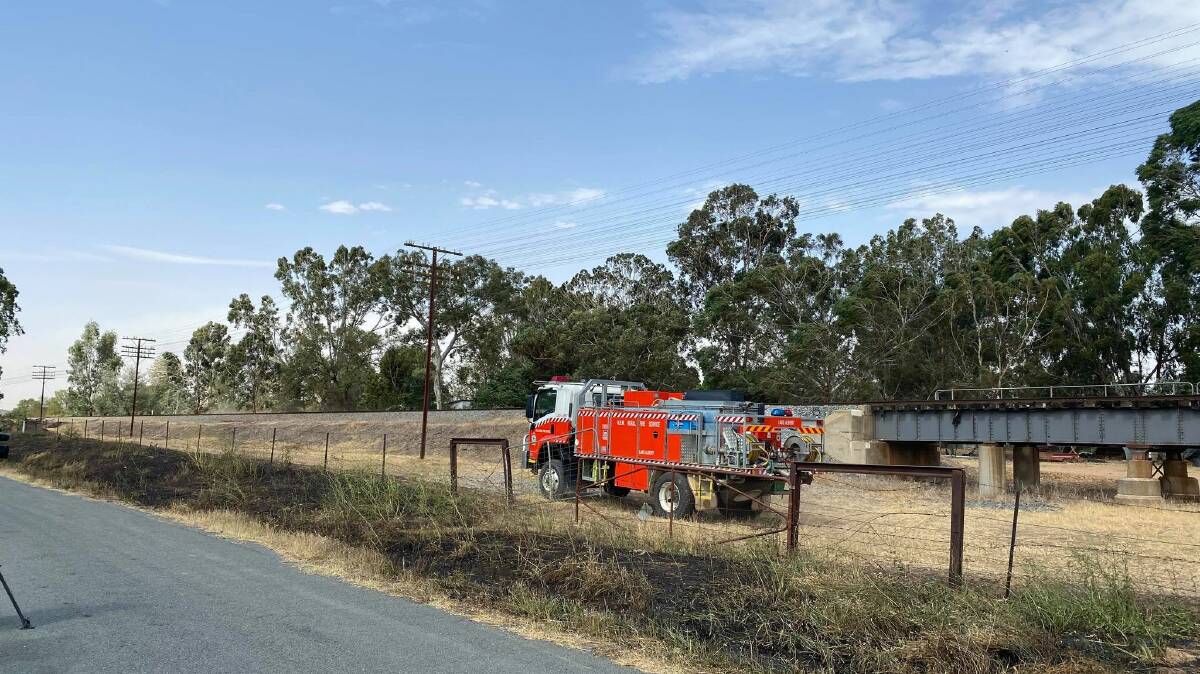
The Daily Advertiser reported that two fires broke out in North Wagga and were brought under control by the quick work of emergency services.
A firefighting aircraft was called in this afternoon to help control two grass fires in North Wagga, which may have been ignited by a mechanical fault in a passing freight train.
NSW Rural Fire Service ground crews tackled the fast-moving flames, which were being fuelled by severe winds with gusts up to 87km/h and high temperatures.
ADVERTISING
Riverina RFS operational officer Bradley Stewart said resources deployed included seven RFS trucks and “Bomber 277”, a small plane, which departed Wagga airbase for one bombing run.
“We believe through reports from persons in the vicinity that it may have been a mechanical failing of a passing freight train, because the fire was within the rail corridor and the ignitions were indicative of a train which had passed through immediately before the fires were noticed,” Mr Stewart said.
“And local residents heard several large noises that they described as a bang or an explosion just prior to the fire being noticed.”
Mr Stewart said fortunately the fires were hemmed in on both sides by the road and the rail corridor, which otherwise would have caused significant damage to rural properties in the Eunony, North Wagga and Bomen areas.
“The fuel loads, the weather humidity and the wind – had the fire become established we would have seen it spread well in excess of three kilometres an hour,” he said.
The first fire broke out at Oura Road and Hale Street, on the eastern edge of North Wagga, about 3.15pm. It was listed as under control by 4.20pm, according to the RFS, thanks to a quick response.
A Fire and Rescue NSW spokeswoman said a second smaller fire, on Whittle Street, was quickly extinguished after burning through 50 square metres.
Wagga is one of the locations for a current RFS trial of “predetermined dispatch of an aircraft”.
“We were able to have that plane launched and flying in a shorter period of time than if we had followed previously established protocols,” Mr Stewart said.
Earlier:
Almost 2000 residences and businesses around Wagga are without power, with 1332 customers from Gumly all the way south to Book Book blacked out.
Another 313 are affected in North Wagga, 90 in Kooringal and 78 more west of Uranquinty are also impacted.
Trains on the nearby line have been stopped from going through as firefighters work to contain the fire.
The fire is currently at advice level, thanks to the quick response of three RFS crews and support from Fire and Rescue NSW.
“We are currently responding with trucks, we’ve also dispatched aircraft immediately to this fire,” Ben Shepherd from the NSW RFS said.
“We have had some lightning and strong winds move through the area.”
“Three RFS and FRNSW crew have managed to get upper hand on that,” Mr Shepherd said.
“There were some concerns initially given the erratic and gusty winds through the area but that fire is going to remain at advice.
“There is also a further small fire as well… but also crews are confident around getting around that.”
A severe thunderstorm warning for damaging winds was issued for a large part of the Riverina shortly after 1.30pm on Tuesday, with gusty winds arriving in the city within an hour.
A wind gust of 87km/h was recorded at Wagga Airport at 3.17pm.
Shire Crops Destroyed by Fire
 The Condobolin Argus reported that a fire north of Condobolin destroyed approximately 120 hectares of crop.
The Condobolin Argus reported that a fire north of Condobolin destroyed approximately 120 hectares of crop.
Fire has destroyed around 200 hectares of crop in the Condobolin area and 120 hectares of grassland at Tullibigeal.
A grassfire destroyed 80 hectares of crop at Ootha, near Condobolin.
The Condo RFS crew were called to a running grass fire on Wednesday, 18 November. They, and others, responded with nine trucks on the scene, containing the blaze.
“Thank you the volunteer firefighters from around the area who responded to the call to assist at Ootha,” a post of the Condo Rfs Facebook Page read.
On Friday, 20 November a fire north of Condobolin destroyed approximately 120 hectares of crop.
Multiple crews form the NSW Rural Fire Service Mid Lachlan Valley Team responded to reports of a grass fire north of Condobolin.
“With exceptional teamwork between NSW Rural Fire Service volunteer firefighters and local landholders in private firefighting vehicles, the fire was quickly brought under control after having burnt through approximately 120 hectares of crop,” a post on the Condo Rfs Facebook Page read.
“A huge thanks to those who responded to the call – RFS volunteers and local landholders alike.”
Bega, Queanbeyan and Cooma benefit from additional bushfire recovery funding
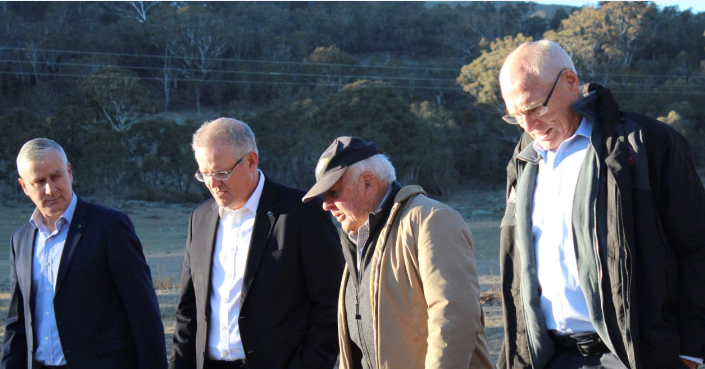
From left: Deputy Prime Minister Michael McCormack; Prime Minister Scott Morrison, Vernon Drew; and NSW Senator Jim Molan.
About Regional reported that the Federal and NSW governments are jointly funding regional councils under stream one of the Bushfire Community Recovery and Resilience Fund (BCRRF) to help promote community wellbeing, social and future disaster resilience.
Bega Valley Shire Council, Queanbeyan-Palerang Regional Council and Snowy Monaro Regional Council will each receive a $250,000 payment to support a range of projects.
“This funding will be great for Bega Valley,” said NSW Senator Jim Molan. “The project will support a range of recovery and resilience projects and will support local communities and businesses, including a series of business resilience workshops and community grant programs focusing on commemorations and business recovery.
“This funding will be great for Queanbeyan-Palerang. The funding will go towards developing a Disaster Resilience Action Plan for the Braidwood area, focusing on community recovery and wellbeing.
“This funding will also be great for the Snowy Monaro region. Snowy Monaro Regional Council will build capacity and resilience in the community with an emphasis on supporting youth, volunteer development, community communication and consultation.
“Our local fire affected communities have distinct sets of circumstances and recovery needs so it’s great to see money directed at the things that matter here in the Shoalhaven.”
Federal Minister for Agriculture, Drought and Emergency Management David Littleproud said the funding will ensure councils can invest in smaller projects that directly benefit recovery efforts, and help communities across NSW to recover in their own way.
“We are continuing to work closely with state governments and councils to ensure funding is available for a range of recovery projects which are identified and delivered at the local and community level,” he said.
“This direct funding to councils is in addition to $25 million set aside for community-led projects under stream two of the BCRRF program, as well as funding support provided through the National Bushfire Recovery Fund.
“I am also pleased to confirm the closing date for community applications for stream two of the BCRRF has been extended. This will ensure everyone with a recovery project idea has enough time to work up their idea and get an application in.”
Applications for stream two of the BCRRF program will now be accepted until 12 pm on 11 December, 2020, and can be submitted online.
